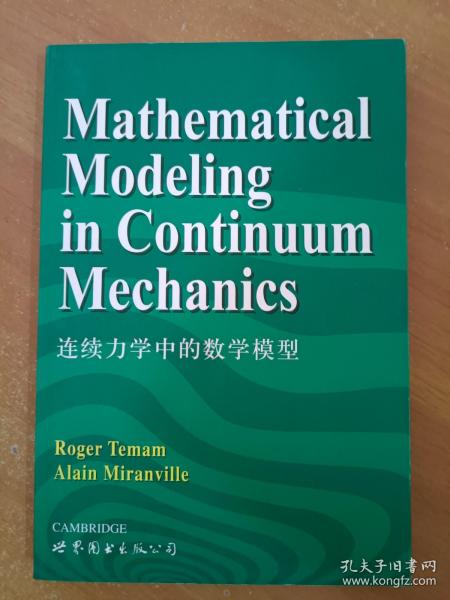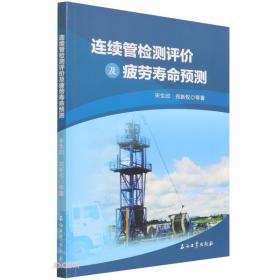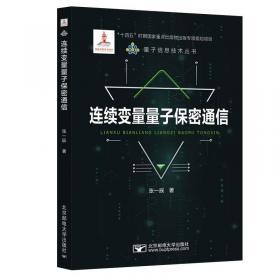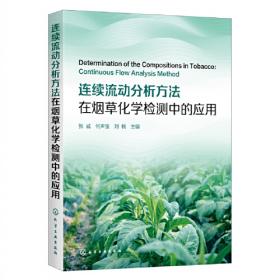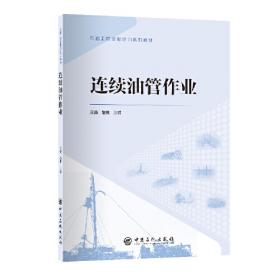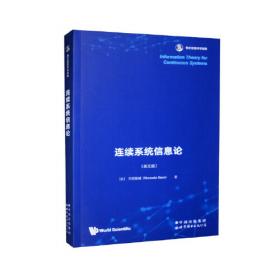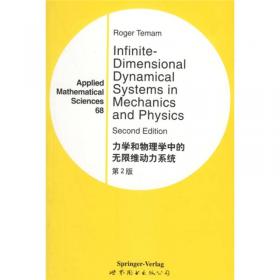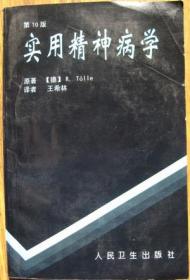连续力学中的数学模型(英文版)
出版时间:
2003-09
版次:
1
ISBN:
9787506265607
定价:
68.00
装帧:
平装
开本:
其他
纸张:
胶版纸
页数:
288页
7人买过
-
At a time when mathematical modeling is pervading many areas of science and master's degree programs in industrial mathematics are being initiated in many universities, this book is intended as an introduction to continuum mechanics and mathematical modeling. One of the aims of the book is to reduce the gap slightly between mathematics and this area of natural science - a gap that is usually due to the language barrier and to the differences in thinking and reasoning. This book is written in a style suitable for mathematicians and adapted to their training. We have tried to remain very close to physics and to mathematics at the same time by making, in particular, a clear separation between what is assumed and what is proved. As it is, the book may appeal as well to a broader audience, such as engineers who would like to have a different perspective on the field, relying less on physical intuition, and advanced researchers who would like an introduction to a field new to them. Introduction
A Few Words About Notations
PART ONE. FUNDAMENTAL CONCEPTS IN CONTINUUM MECHANICS
1 Describing the Motion of a System: Geometry and Kinematics
1.1 Deformations
1.2 Motion and Its Observation Kinematics
1.3 Description of the Motion of a System: Eulerian and Lagrangian Derivatives
1.4 Velocity Field of a Rigid Body: Helicoidal Vector Fields
1.5 Differentiation of a Volume Integral Depending on a Parameter
2 The Fundamental Law of Dynamics
2.1 The Concept of Mass
2.2 Forces
2.3 The Fundamental Law of Dynamics and Its First Consequences
2.4 Application to Systems of Material Points and to Rigid Bodies
2.5 Galilean Frames: The Fundamental Law of Dynamics Expressed in a Non-Galilean Frame
3 The Cauchy Stress Tensor - Applications
3.1 Hypotheses on the Cohesion Forces
3.2 The Cauchy Stress Tensor
3.3 General Equations of Motion
3.4 Symmetry of the Stress Tensor
4 Real and Virtual Powers
4.1 Study of a System of Material Points
4.2 General Material Systems: Rigidifying Velocities
4.3 Virtual Power of the Cohesion Forces: The General Case
4.4 Real Power: The Kinetic Energy Theorem
5 Deformation Tensor, Deformation Rate Tensor,Constitutive Laws
5.1 Further Properties of Deformations
5.2 The Deformation Rate Tensor
5.3 Introduction to Rheology: The Constitutive Laws
6 Energy Equations and Shock Equations
6.1 Heat and Energy
6.2 Shocks and the Rankine-Hugoniot Relations
PART TWO. PHYSICS OF FLUIDS
7 General Properties of Newtonian Fluids
7.1 General Equations of Fluid Mechanics
7.2 Statics of Fluids
7.3 Remark on the Energy of a Fluid
8 Flows of Inviscid Fluids
8.1 GeneralTheorems
8.2 Plane Irrotational Flows
8.3 Transsonic Flows
8.4 Linear Acoustics
9 Viscous Fluids and Thermohydraulics
9.1 Equations of Viscous Incompressible Fluids
9.2 Simple Flows of Viscous Incompressible Fluids
9.3 Thermohydraulics
9.4 Equations in Nondimensional Form: Similarities
9.5 Notions of Stability and Turbulence
9.6 Notion of Boundary Layer
10 Magnetohydrodynamics and Inertial Confinement of Plasmas
10.1 The Maxwell Equations and Electromagnetism
10.2 Magnetohydrodynamics
10.3 The Tokamak Machine
11 Combustion
11.1 Equations for Mixtures of Fluids
11.2 Equations of Chemical Kinetics
11.3 The Equations of Combustion
11.4 Stefan-Maxwell Equations
11.5 A Simplified Problem: The Two-Species Model
12 Equations of the Atmosphere and of the Ocean
12.1 Preliminaries
12.2 Primitive Equations of the Atmosphere
12.3 Primitive Equations of the Ocean
12.4 Chemistry of the Atmosphere and the Ocean
Appendix: The Differential Operators in Spherical Coordinates
PART THREE. SOLID MECHANICS
13 The General Equations of Linear Elasticity
13.1 Back to the Stress-Strain Law of Linear Elasticity:
The Elasticity Coefficients of a Material
13.2 Boundary Value Problems in Linear Elasticity:The Linearization Principle
13.3 Other Equations
13.4 The Limit of Elasticity Criteria
14 Classical Problems of Elastostatics
14.1 Longitudinal Traction-Compression of a Cylindrical Bar
14.2 Uniform Compression of an Arbitrary Body
……
15 Energy Theorems - Duality: Variational Formulations
16 Introduction to Nonlinear Constitutive Laws and to Homogenization
17 Linear Wave Equations in Mechanics
18 The Soliton Equation: The Korteweg-de Vries Equation
19 The Nonlinear Schrodinger Equation
Appendix The Partial Differential Equations of Mechanics
References
Index
-
内容简介:
At a time when mathematical modeling is pervading many areas of science and master's degree programs in industrial mathematics are being initiated in many universities, this book is intended as an introduction to continuum mechanics and mathematical modeling. One of the aims of the book is to reduce the gap slightly between mathematics and this area of natural science - a gap that is usually due to the language barrier and to the differences in thinking and reasoning. This book is written in a style suitable for mathematicians and adapted to their training. We have tried to remain very close to physics and to mathematics at the same time by making, in particular, a clear separation between what is assumed and what is proved. As it is, the book may appeal as well to a broader audience, such as engineers who would like to have a different perspective on the field, relying less on physical intuition, and advanced researchers who would like an introduction to a field new to them.
-
目录:
Introduction
A Few Words About Notations
PART ONE. FUNDAMENTAL CONCEPTS IN CONTINUUM MECHANICS
1 Describing the Motion of a System: Geometry and Kinematics
1.1 Deformations
1.2 Motion and Its Observation Kinematics
1.3 Description of the Motion of a System: Eulerian and Lagrangian Derivatives
1.4 Velocity Field of a Rigid Body: Helicoidal Vector Fields
1.5 Differentiation of a Volume Integral Depending on a Parameter
2 The Fundamental Law of Dynamics
2.1 The Concept of Mass
2.2 Forces
2.3 The Fundamental Law of Dynamics and Its First Consequences
2.4 Application to Systems of Material Points and to Rigid Bodies
2.5 Galilean Frames: The Fundamental Law of Dynamics Expressed in a Non-Galilean Frame
3 The Cauchy Stress Tensor - Applications
3.1 Hypotheses on the Cohesion Forces
3.2 The Cauchy Stress Tensor
3.3 General Equations of Motion
3.4 Symmetry of the Stress Tensor
4 Real and Virtual Powers
4.1 Study of a System of Material Points
4.2 General Material Systems: Rigidifying Velocities
4.3 Virtual Power of the Cohesion Forces: The General Case
4.4 Real Power: The Kinetic Energy Theorem
5 Deformation Tensor, Deformation Rate Tensor,Constitutive Laws
5.1 Further Properties of Deformations
5.2 The Deformation Rate Tensor
5.3 Introduction to Rheology: The Constitutive Laws
6 Energy Equations and Shock Equations
6.1 Heat and Energy
6.2 Shocks and the Rankine-Hugoniot Relations
PART TWO. PHYSICS OF FLUIDS
7 General Properties of Newtonian Fluids
7.1 General Equations of Fluid Mechanics
7.2 Statics of Fluids
7.3 Remark on the Energy of a Fluid
8 Flows of Inviscid Fluids
8.1 GeneralTheorems
8.2 Plane Irrotational Flows
8.3 Transsonic Flows
8.4 Linear Acoustics
9 Viscous Fluids and Thermohydraulics
9.1 Equations of Viscous Incompressible Fluids
9.2 Simple Flows of Viscous Incompressible Fluids
9.3 Thermohydraulics
9.4 Equations in Nondimensional Form: Similarities
9.5 Notions of Stability and Turbulence
9.6 Notion of Boundary Layer
10 Magnetohydrodynamics and Inertial Confinement of Plasmas
10.1 The Maxwell Equations and Electromagnetism
10.2 Magnetohydrodynamics
10.3 The Tokamak Machine
11 Combustion
11.1 Equations for Mixtures of Fluids
11.2 Equations of Chemical Kinetics
11.3 The Equations of Combustion
11.4 Stefan-Maxwell Equations
11.5 A Simplified Problem: The Two-Species Model
12 Equations of the Atmosphere and of the Ocean
12.1 Preliminaries
12.2 Primitive Equations of the Atmosphere
12.3 Primitive Equations of the Ocean
12.4 Chemistry of the Atmosphere and the Ocean
Appendix: The Differential Operators in Spherical Coordinates
PART THREE. SOLID MECHANICS
13 The General Equations of Linear Elasticity
13.1 Back to the Stress-Strain Law of Linear Elasticity:
The Elasticity Coefficients of a Material
13.2 Boundary Value Problems in Linear Elasticity:The Linearization Principle
13.3 Other Equations
13.4 The Limit of Elasticity Criteria
14 Classical Problems of Elastostatics
14.1 Longitudinal Traction-Compression of a Cylindrical Bar
14.2 Uniform Compression of an Arbitrary Body
……
15 Energy Theorems - Duality: Variational Formulations
16 Introduction to Nonlinear Constitutive Laws and to Homogenization
17 Linear Wave Equations in Mechanics
18 The Soliton Equation: The Korteweg-de Vries Equation
19 The Nonlinear Schrodinger Equation
Appendix The Partial Differential Equations of Mechanics
References
Index
查看详情
-
全新
北京市海淀区
平均发货15小时
成功完成率84.62%
-
全新
陕西省宝鸡市
平均发货28小时
成功完成率87.18%
-
全新

 占位居中
占位居中





